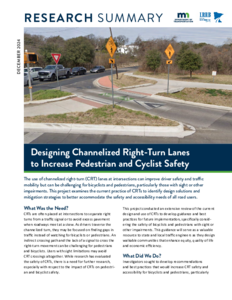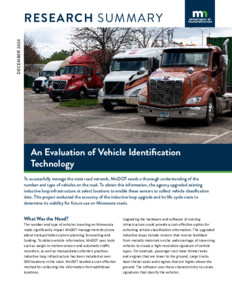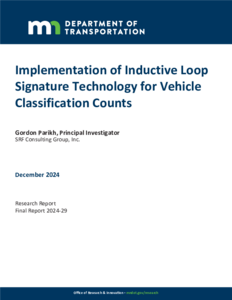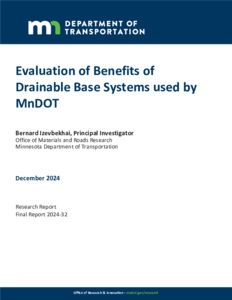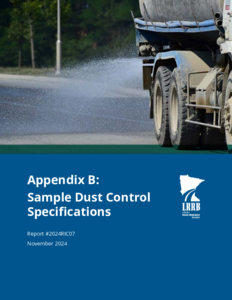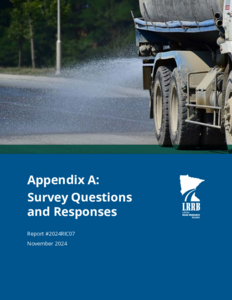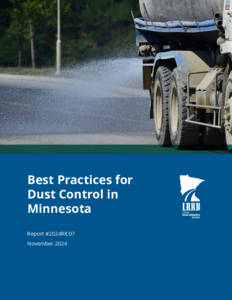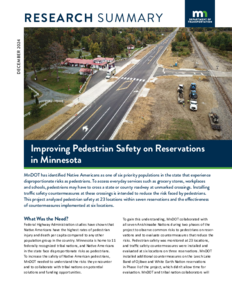Chloride Deposition from Salt Application Calculator
Date Created
2024-12
Report Number
2024RIC07S
Description
Implementation of Inductive Loop Signature Technology for Vehicle Classification Counts
Date Created
2024-12
Report Number
2024-29
Description
Pedestrian Safety and Accessibility Best Practices for Channelized Right-Turn Lanes
Date Created
2024-12
Report Number
2024-31
Description
Evaluation of Benefits of Drainable Base Systems used by MnDOT
Date Created
2024-12
Report Number
2024-32
Description
Appendix B: Sample Dust Control Specifications
Date Created
2024-11
Report Number
2024RIC07B
Description
Appendix A: Survey Questions and Responses
Date Created
2024-11
Report Number
2024RIC07A
Description
Best Practices for Dust Control in Minnesota
Date Created
2024-11
Report Number
2024RIC07
Description

